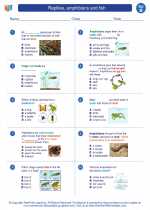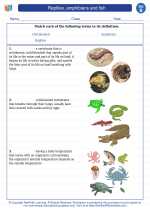Historical Interpretation
Historical interpretation is the process of examining and analyzing historical events, documents, and artifacts to understand and interpret their significance. It involves evaluating primary and secondary sources, considering different perspectives, and forming conclusions about the past.
Key Concepts
- Primary Sources: These are firsthand accounts or original documents from the time period being studied, such as diaries, letters, photographs, and official records.
- Secondary Sources: These are interpretations or analyses of primary sources created after the time period, such as history books, articles, and documentaries.
- Perspective: Understanding that historical events can be interpreted differently based on the viewpoints and biases of the people involved.
- Critical Thinking: Using reasoning and analysis to evaluate historical evidence and draw conclusions about the past.
Study Guide
When studying historical interpretation, it's important to consider the following questions:
- What primary sources are available for the event or time period?
- How do different historians interpret and analyze these sources?
- What are the biases or perspectives of the individuals involved in the historical event?
- What impact did the event have on society at the time, and how has it been remembered and interpreted over time?
By critically examining these questions and exploring a variety of sources, students can develop a deeper understanding of historical interpretation and the complexities of the past.
[Historical Interpretation] Related Worksheets and Study Guides:
.◂Science Worksheets and Study Guides Second Grade. Reptiles, amphibians and fish
Study Guide Reptiles, amphibians and fish
Reptiles, amphibians and fish  Activity Lesson
Activity Lesson Reptiles, Amphibians & Fish
Reptiles, Amphibians & Fish  Worksheet/Answer key
Worksheet/Answer key Reptiles, amphibians and fish
Reptiles, amphibians and fish  Worksheet/Answer key
Worksheet/Answer key Reptiles, amphibians and fish
Reptiles, amphibians and fish  Worksheet/Answer key
Worksheet/Answer key Reptiles, amphibians and fish
Reptiles, amphibians and fish  Worksheet/Answer key
Worksheet/Answer key Reptiles, Amphibians and Fish
Reptiles, Amphibians and Fish  Vocabulary/Answer key
Vocabulary/Answer key Reptiles, amphibians and fish
Reptiles, amphibians and fish 

 Activity Lesson
Activity Lesson
 Worksheet/Answer key
Worksheet/Answer key
 Worksheet/Answer key
Worksheet/Answer key
 Worksheet/Answer key
Worksheet/Answer key
 Worksheet/Answer key
Worksheet/Answer key
 Vocabulary/Answer key
Vocabulary/Answer key

The resources above cover the following skills:
LIFE SCIENCE (NGSS)
Ecosystems: Interactions, Energy, and Dynamics
Students who demonstrate understanding can:
Plan and conduct an investigation to determine if plants need sunlight and water to grow.